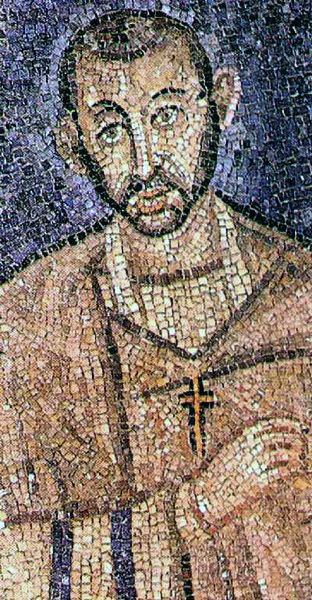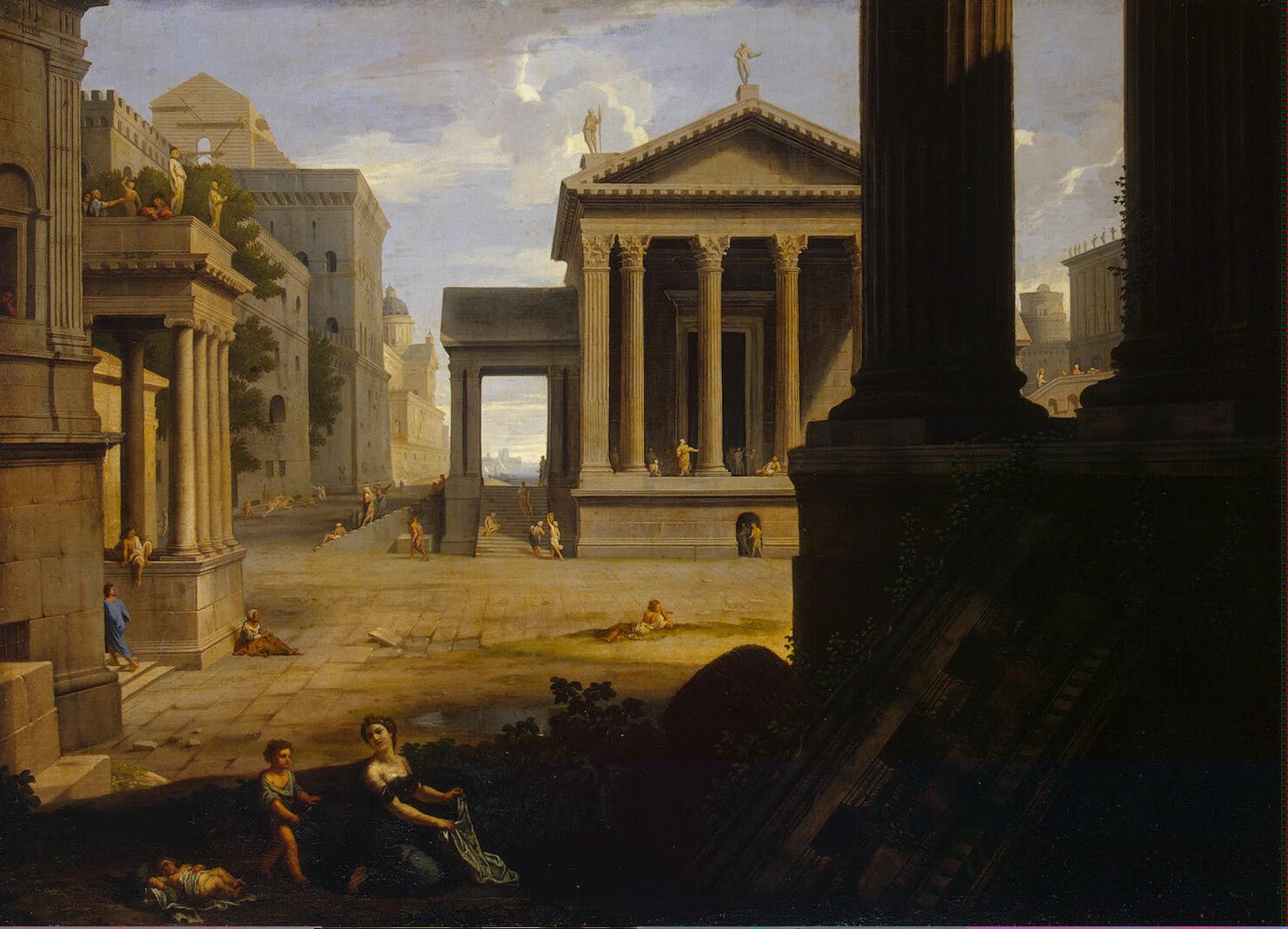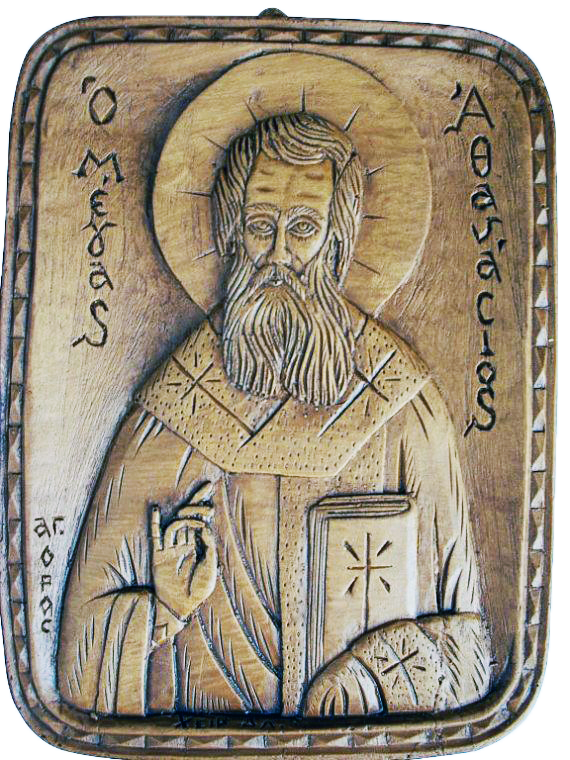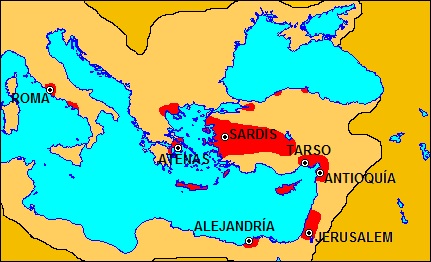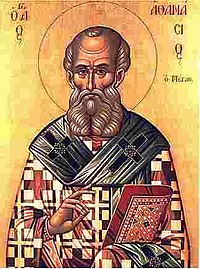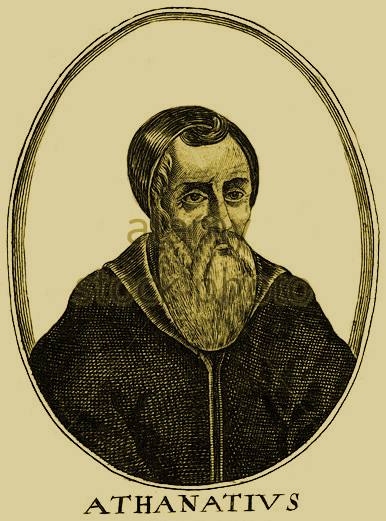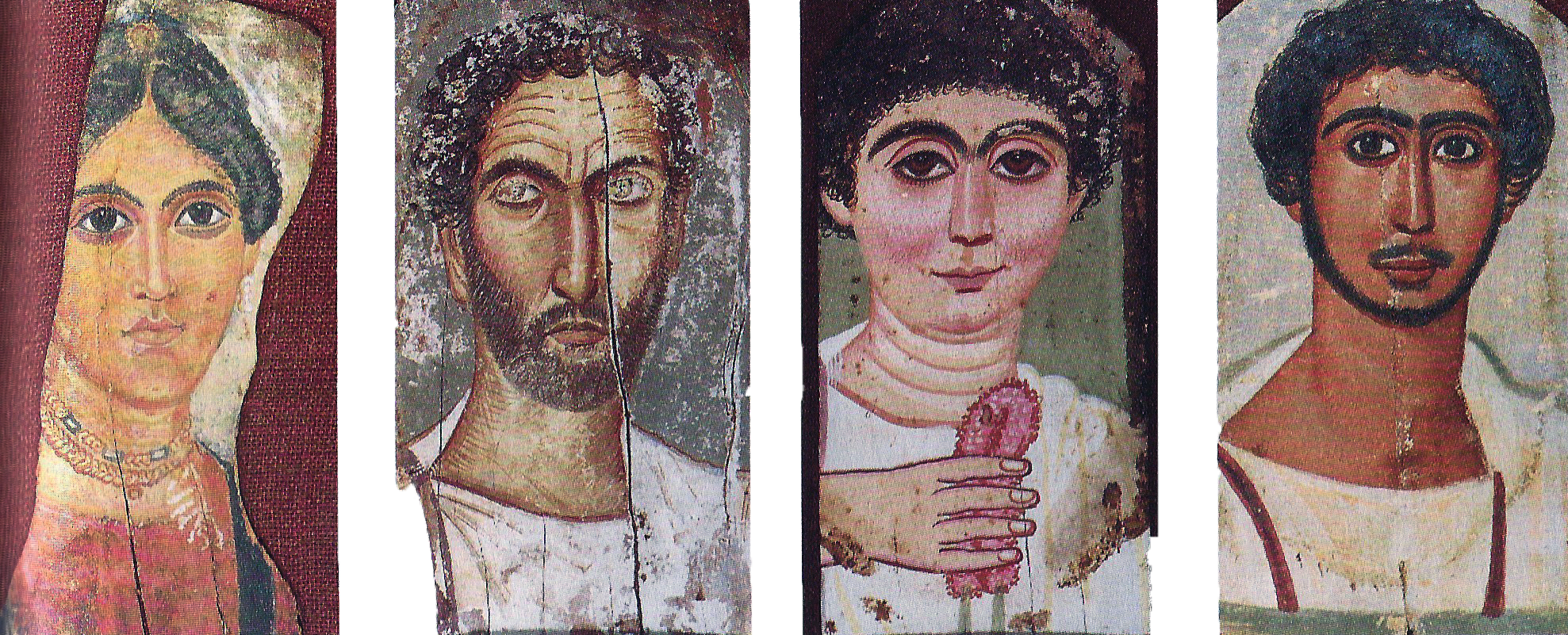Below, an abridged translation from the first volume of Karlheinz Deschner’s Kriminalgeschichte des Christentums (Criminal History of Christianity). For a comprehensive text that explains the absolute need to destroy Judeo-Christianity, see here. In a nutshell, any white person who worships the god of the Jews is, ultimately, ethnosuicidal.
The scene of the bishops Lucifer of Cagliari and Liberius of Rome
A tragicomic curiosity of sacred history was the bishop Lucifer of Cagliari, a fanatical anti-Arian of scarce formation who, for the dogma of Nicaea, suffered a long exile almost alone in Syria and Palestine. Since a clergyman should pay no homage to a ‘heretic’ emperor, he drafted a host of writings against him, in which, among numerous biblical quotations, he interposed all kinds of primitive expletives, calling him the antichrist in person and worthy of the fire of hell.
 Nevertheless, Lucifer also antagonised Liberius of Rome and with Hilary of Poitiers he did not recognise the opportunistic measures of Athanasius in the ‘synod of peace’ (362). Rather he turned his back on the Catholics, frightened by their wealth, relaxation and accommodation, and from Sardinia he organised his own circle, which lasted until the 5th century: a small but very active council, branched from Trier to Africa, Egypt and Palestine. Lucifer had supporters even among the Roman clergy.
Nevertheless, Lucifer also antagonised Liberius of Rome and with Hilary of Poitiers he did not recognise the opportunistic measures of Athanasius in the ‘synod of peace’ (362). Rather he turned his back on the Catholics, frightened by their wealth, relaxation and accommodation, and from Sardinia he organised his own circle, which lasted until the 5th century: a small but very active council, branched from Trier to Africa, Egypt and Palestine. Lucifer had supporters even among the Roman clergy.
After his death (370- 371) the head of the Gregory movement, bishop of Elvira, was in his origins also a radical defender of orthodoxy. The Luciferians, ‘those who profess the true faith’, rejected the Catholics as schismatics, censured their belonging to the State and the avidity of their prelates for honours, wealth and power, the ‘luxurious basilicas’, the ‘overflowing basilicas of gold, covered with sumptuous and expensive marbles, with ostentatious columns’, ‘the extensive real estate of the rulers’. The strict Catholic Theodosius I recognised them as Orthodox. They even had a bishop in Rome, Ephesus, who tried in vain to deliver justice to Pope Damasus. The prefect of the city, Bassus, categorically refused ‘to persecute Catholic men of irreproachable character’.[1]
But the lords themselves handled the problem. In Oxyrhynchus, Egypt, Catholic priests smashed with axes the altar of the Luciferian bishop Heraclides. In Trier, the priest Bonosus was persecuted. In Rome, the police and the papal clerics mistreated the Luciferian Macarius in such a way that he died as a result of the wounds in Ostia, where he had been exiled. (However, the local bishop, Florentinus, did not want to have anything to do with the ‘Damasus crime’ and moved his mortal remains to a pantheon.)
In Spain, the Catholics forced the doors of the church of the presbyter Vicenç, dragged the altar to a temple under an idol, beat the acolytes of the ecclesiastic, tied him with chains and left him to die of hunger. Bishop Epictetus de Civitavecchia carried out a much shorter process. He tied the Luciferian Rufinus to his carriage and tormented him to death. However, Bishop Lucifer of Cagliari was venerated as a saint in Sardinia, which for the time being was closed to the central Church, and as such he was recognised in 1803 by Pope Pius VII.[2]
The fact that the history of the popes is not in short supply of curiosities is also demonstrated by Bishop Liberius.
In vain did the emissary of the emperor, the praepositus sacri cubiculi, Eusebius, a eunuch of ill repute who was executed under Julian, persuade Liberius to condemn Athanasius. Donations and threats were useless, so Constantius had the Roman kidnapped at night and brought him to Milan. There he explained the damage that Athanasius had done to everyone, but especially to him. ‘He has not been satisfied with the death of my elder brother and has not ceased to instigate the already deceased Constant to enmity against us’. The sovereign added that even his successes against the usurpers Magnentius and Silvanus did not mean so much to him ‘as the disappearance of this impious man from the ecclesiastical scene’. Apparently Constantius placed a high price on the capture of the fugitive Alexandrian and sought the help of the kings of Ethiopia.[3]
However, the Roman bishop wanted to oppose to the maximum the ‘heretic’ emperor, even ‘dying for God’. Therefore, Constantius interrupted the conversation: ‘What part of the inhabited earth are you, that you alone stand beside an ungodly man and disturb the peace of the whole world?’ ‘You are the one who, by yourself, cling to the friendship with that person without conscience’. Liberius received a period of three days to reflect, but remained unperturbed. ‘For me, the laws of the Church are above everything’, he said. Send me wherever you want. ‘And this despite the fact that, according to Ammianus, he was convinced of Athanasius’ guilt.
But after two years of exile in Veria, with the brainwashing applied to him by the local Bishop Demophilus and Fortunatus, bishop of Aquileia, Liberius capitulated. The Roman so admired in Milan, the ‘victorious fighter for the truth’ (Theodoret), had to expel from the Church, in a very special spectacle, the ‘father of orthodoxy’: the doctor of the church Athanasius, and signed a semi-Arian creed (the so-called third formula, according to which the ‘Son’ is only similar to the ‘Father’), bringing to light his free will. In reality, what Liberius did was buy his return. All he wanted was to get out of this deep affliction and return to Rome. Even the father of the Church Jerome explained in his time that Liberius, broken in exile, had given a ‘heretical’ signature.[4]
Constantius authorised in 358 the return of Liberius under the condition that he should administer the bishopric of Rome jointly with his successor Felix.
_______________
Note of the translator: The footnotes still lack the general bibliography, which will be ready as I finish the abridgement of this first volume.
[1] Socr. 2,36 f. Soz. 4,9. Athan. hist. Arian. ad mon. 31 f. Lucif. Calar. Den non parcendo in Deum delinquentibus. Cf. De non conviendo cum haereticis.- De regibus apostaticis. – De San Athanasio. – Moriendum esse pro Dei filio. Cf. also to complete the history of cults written in 384 by clerics Faustinus and Marcellinus, the so-called Libelus precum in Collectio Avellana. Cf. esp. also Coll. Avell. ep. 2,85. Pierer X 567 f. LThK 1st ed. IV 673, VI 677 f. Bertholet 331. Altaner 320. Kraft, Kirchenväter Lexikon 354. Krüger, Lucifer 39 f. Rauschen 140. Stein, Vom römischen 234 f. Caspar, Papsttum I 201 f, 216 s. V. Campenhausen, Ambrosius 6. Lietzmann, Geschichte IV 40 f. Hemegger 403 f. Haendier, Von Tertullian 96 f. Klein, Constantius II 56 f, 121 s. Joannou 119, 139 f.
[2] Libellus precum 21; 23 f. Pierer X 567 f. Rauschen 199 f, Caspar, Papsttum I 202 f, 216. Hemegger 403 f.
[3] Soz. e. h. 4,11,3. Ammian. Rerum gestarum 15,7; 22,3. Athan. hist. Arian. 38 f. apol. ad Const. 29. Socr. e. h. 2,16. Theodor. e.h. 2,13; 2,16. Wojtowytsch 122 f. Klein, Constantius II 137 f.
[4] Theodor e. h. 2,16 f. Liberius, ep. 10 (Hilar. 4,168); ep. 12 (Hilar. 4,172); ep. 18 (Hilar. 4,155). Hilarii Coll. antiar. (frg. hist.) «Pro deifico», “Quia scio”, “Non doceo”. Soz. e. h. 4,15. Theodor. e. h. 2,16 f. Philostorg. 4,3. Sulp. Sev. Chron. 2,39. Hieron. de vir. ill. 97. Ammian. 15,7 f. Athan. hist. Arian. 38 f. LThK 1st ed. VI 549 f, IX 597 f. Altaner 307 f. Grisar, Geschichte Roms 281. Caspar, Papsttum 1171 f, 183 f. Hermann, Ein Streitgespräch 77 f. Wojtowytsch 121 f. Klein, Constantius II 86, 140 f. Aland, Von Jesus bis Justinian 181. Haendier, Von Tertullian 94 f. Jacob, Aufstände 152.
